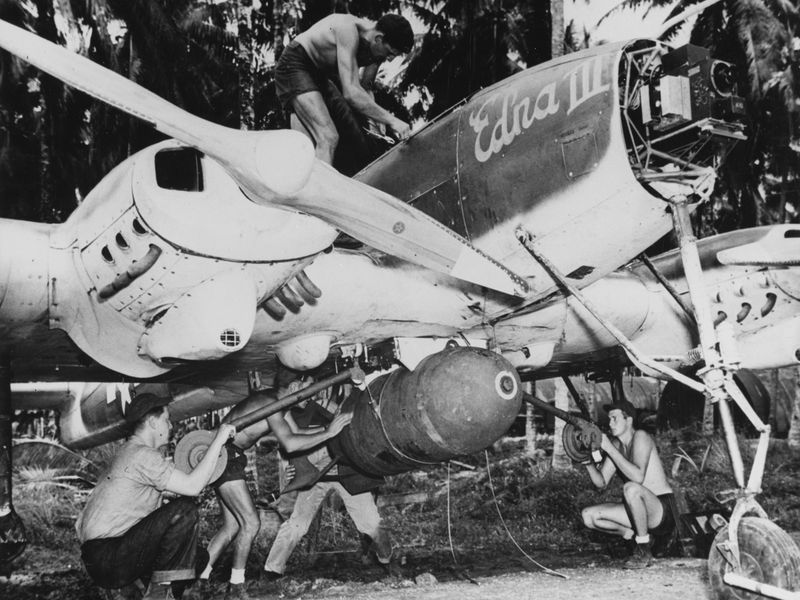When Was The First Airstrike By a Drone? – October 20, 2017

Washington State Apples – Japan and “Upside Down Pangborn” – October 13, 2017
October 14, 2017
When The SR-71 Went Public, Pilots Had Already Been Flying It’s Lookalike In Secret – October 27, 2017
October 28, 2017Robert Novells’ Third Dimension Blog
October 20, 2017
Good Morning and Welcome to the 3DB,
Today I want to talk about UAVs and how they have changed the world of military aviation and will change the world of commercial aviation. Over the past decade UAVs have become the counter-terrorism weapon of choice. Since 2005 there has been a dramatic increase, almost 2000% by some estimates, in combat air patrols by UAVs. Hardly a month passes without claims that another Taliban leader, or other terrorist, has been taken out by drone-launched missiles and now there are more hours flown by America’s UAVs than by its manned strike aircraft and more pilots are being trained to fly them than their manned equivalents.
To reduce the workload on pilots, big UAVs can already take off and land automatically. They can fly unaided to the target area and monitor much of what is happening on the ground without help from their controllers. At present, each drone has its own pilot. But the US Air Force plans to have a single pilot operating up to four drones at a time. And the aim is to go much further, with largely autonomous UAVs programmed to make mission-critical decisions when flying in swarms to overwhelm enemy air defenses……….. It may even be possible, according to military visionaries, to give drones a form of ethical reasoning, using artificial intelligence.
One of the most interesting comments I found was from Robert Gates, former Defense Secretary, and he said:
The F-35 will probably be the last manned strike fighter and the pilot in the cockpit will become an endangered species; however, this transition may take longer than we think.
So, how many UAVs are out there operating for the Department of defense? The number I found was 6500. How many new systems are proposed and how will this grow over the years? Good question.
Now that I have set the stage with a brief overview of current UAV affairs let’s talk about where the concept originated for the military.
Enjoy…..
The First Drone Strike
Navy officer Delmar Fahrney was among the first visionaries to realize that remotely piloted aircraft could be used to deliver ordnance without putting soldiers at risk. Fahrney was instrumental in creating three Special Task Air Groups (STAGs) to deploy drones in the Pacific Theater.
The program, started in 1942, used cheap-to-make and easy-to-fly twin-engine drones, designated TDR-1s. Drones were a low-priority proposition, built by Interstate Aircraft out of pressed wood (created by piano-maker Wurlitzer) over tubular metal frames (erected by bike-maker Schwinn). Each one had a removable cockpit, so it could be ferried by a human pilot. But it was designed to be flown via radio-control by a pilot in a TBM Avenger torpedo bomber accompanying the drone.
The secret of the TDR-1 was a new form of top-secret technology: an RCA television. A camera mounted in the drone’s nose transmitted images back to a five-inch screen mounted in the Avenger’s rear cockpit. Although the green, high-contrast display was too crude for watching baseball or a movie, it was good enough for spotting ships on the horizon, which made it valuable for the naval war being fought in the Pacific.
Nevertheless, drones faced resistance from Navy critics, and STAG One wasn’t shipped to the Solomon Islands until June 1944. There, the unit encountered primitive conditions. “The tropical climate could, and did, wreak havoc with electronic equipment,” drone pilot James J. Hall wrote in his memoir, American Kamikaze.
On July 30—called “D-day” in STAG One’s official war diary—four TDR-1s flew a demonstration mission against a derelict Japanese freighter beached near Guadalcanal. Three of them slammed into the target; two detonated as planned. Film of the assault was shown to Navy brass in Pearl Harbor, who granted permission to mount combat operations.
On September 27, 1944, four drones, each armed with a 2,000-pound bomb, flew 55 miles to Bougainville to attack an anti-aircraft battery the Japanese had established on a beached merchant vessel. One of the TDR-1s was lost at sea. A second crashed 30 yards astern of the gun emplacement, but the bomb failed to detonate. The third probably hit the port side of the ship. The fourth flew through flak to land dead-center on target and explode.
Combat operations with the drones continued for the next month. With the range of the attacks extended to 160 miles, STAG One attacked gun installations, bridges, caves, a cargo ship, and a lighthouse. The standard technique was to fly the TDR-1 directly into the target, but on occasion the drone dropped bombs remotely.
Overall, the drone’s performance was mixed but promising. Fifteen of 46 drones were lost before reaching their objective; of the rest, perhaps half hit or came close enough to damage the target. According to a Navy postmortem: “The drone is capable of precision attack given a target of sufficient size and sufficient definition as to be visible in the television screen.”
Despite modest successes—and even though no American lives were lost—by the end of October 1944 the TDR-1s were grounded, the victims of military politics, not-invented-here syndrome, and general skepticism about the technology. The STAG units were disbanded and the drones discarded. Today, the last remaining TDR-1 hangs at the National Naval Aviation Museum in Pensacola, Florida. But with the uncrewed X-47B performing autonomous aircraft carrier takeoffs and landings, how long before piloted bombers are rendered as obsolete as the world’s first combat drone?
Enjoy what is left of the weekend and remember to spend time with family and friends…..life is short.
Robert Novell
October 20, 2017


